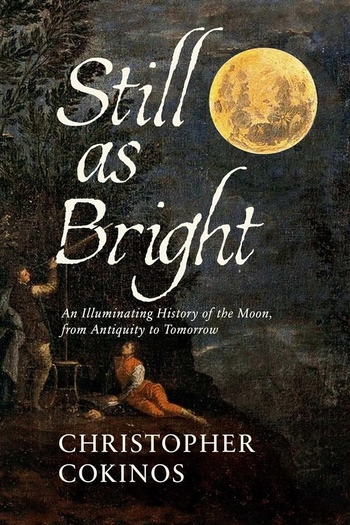Review: Still As Brightby Jeff Foust
|
| This book is, on one level, a history of our studies of the Moon, as its subtitle suggests, but interwoven in those chapters is the author’s own experiences related to the Moon. |
He instead became a writer and English professor (including essays published here) but with an interest in the night sky, and specifically the Moon, that continued through his adult life. “The Moon is a provocation for culture, art, and science,” he writes in the prologue of the book, an examination of the Moon and our relationship with it, as our interest in exploring and perhaps one day living on it grows. It is similar in its themes, but different in approach, to Rebecca Boyle’s Our Moon (see “Review: Our Moon”, The Space Review, April 1, 2024) published earlier this year
This book is, on one level, a history of our studies of the Moon, as its subtitle suggests. He explores various aspects of our changing understanding of the Moon over the centuries, from efforts centuries ago to map the lunar surface and name its features to the Apollo missions that walked on that surface. He explores in detail some specific topics, like the study of, and controversy surrounding, transient lunar phenomena that could be evidence of ongoing lunar activity—if such phenomena exist—as well as the special attention that the Apollo 15 crew gave to their geologic training ahead of their mission, which paid off for the astronauts and the scientists alike.
Interwoven in those chapters is the author’s own experiences related to the Moon, from childhood to the present day; a memoir of sorts. Much of that revolves around observing the Moon, from childhood attempts using a small telescope called a Space Conqueror (a copy of which he finds in a thrift store decades later and restores) to larger telescopes he owns. Late in the book, he visits Mt. Wilson and observes the Moon through the 60-inch telescope there. The thrill of seeing the Moon up close comes though those pages.
Still As Bright and Our Moon are complementary to each other, taking different approaches to exploring the Moon and humanity’s relationship with it, as well as the authors’ own perspectives. Those perspectives are continuing to evolve. While Cokinos gave up on his dreams of becoming an astronaut in school, last month he commanded a lunar mission of sorts: a six-day analog lunar mission organized by the University of Arizona in a habitat at Biosphere 2, part of a crew that included a poet, textile artist, and dancer/choreographer. Asked afterwards if he would be willing to go to the Moon, he responded, “I would do it in a heartbeat.”
Note: we are now moderating comments. There will be a delay in posting comments and no guarantee that all submitted comments will be posted.
